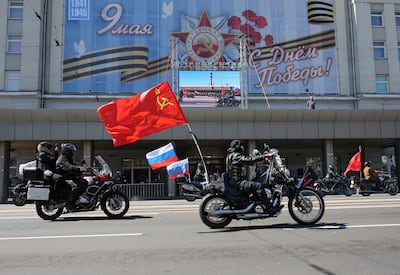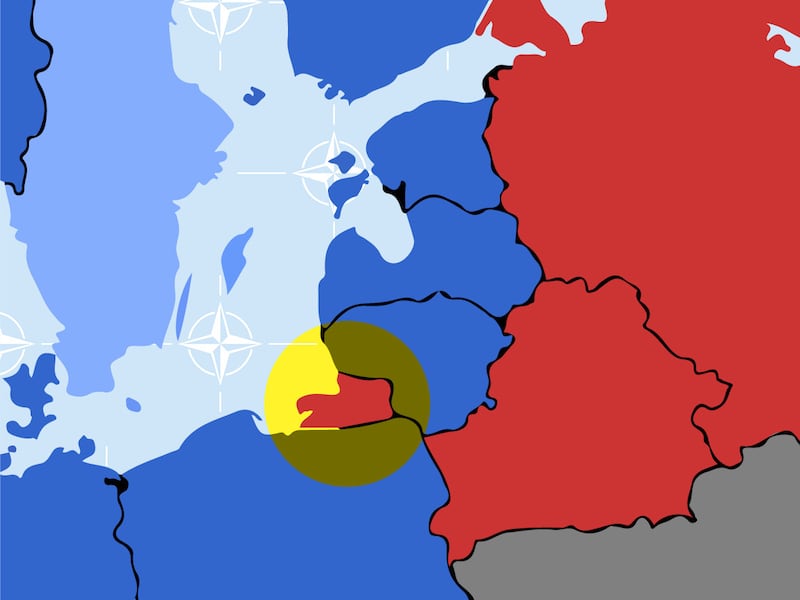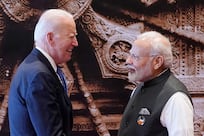The pending accession of Sweden to Nato will be a major gamechanger, causing a fundamental transformation of the security architecture in the Baltic Sea region. One of the most prominent manifestations is the Russian oblast of Kaliningrad, an exclave of Russian territory with a population of a million people sandwiched between Poland, Lithuania and the Baltic Sea.
Having long been the main Russian stronghold for controlling the Baltic, it will now find itself on the shores of Lake Nato.
Once the capital of German East Prussia, the city once known as Konigsberg was captured by the Red Army and incorporated into the Russian Federation as Kaliningrad. During the Cold War, it formed a key part of the Soviet border against Nato. With the collapse of the Soviet Union, it was transformed into the exclave it is today.
With the enlargement of Nato in 2004, Poland and the Baltic States were brought into the western alliance. While this was a major setback for Russia, it also created a security conundrum for Nato. According to a wargaming exercise by the Rand Corporation, a US think tank, a Russian invasion of Estonia and Latvia could be accomplished in 48 hours. If this were to happen, would Nato be able to come to the rescue? This was where Kaliningrad entered the picture in earnest.
Under the presidency of Vladimir Putin it was transformed into what military jargon calls an A2/AD (Anti-Access/Area Denial) “bubble”.
In addition to heavy ground forces, it had powerful anti-ship missile batteries that controlled the coast and air defence batteries that controlled the skies above. Most importantly, it was home to nuclear-capable Iskander ballistic missiles. In 2009, a Russian war game featured a simulated nuclear strike on Warsaw.
Any ambition by a Nato force to come to the rescue of Estonia would have entailed fighting its way past Kaliningrad, which would have been bloody. The alternative was to proceed on land, from Poland into Lithuania via the Suwalki gap, a stretch of land between Kaliningrad and Belarus. But that would also be under enemy fire control. As a backup, Nato planned low-level insertion by helicopter of special operations forces that would link up with partisans.

With Sweden (and Finland) inside Nato, the security architecture in the Baltic has been completely transformed. Any potential move by the Russian armed forces against Estonia would now be met by the combined Swedish and Finnish air forces. Ultra-silent Swedish submarines would counter the Russian navy, and American airborne forces would operate from the Swedish island Gotland, which controls the centre of the Baltic Sea.
Kaliningrad’s posture has been transformed as well. Its previously formidable military garrison has been degraded, as all units have been compelled to send the bulk of their troops to Ukraine. It is surrounded by Nato forces that are stronger and more unified than ever, and its navy will not leave its moorings in Baltiisk. Its future is now dependent on how the war in Ukraine concludes.
Belarus would be critical to any negotiated end to the war that allows Russia to save face. Only together could Moscow and Minsk embark on rebuilding a military posture against Nato in the Baltic Sea region. The front line against such a build-up would be held by the countries that make up the so-called Lublin Triangle – namely, Poland, Lithuania and Ukraine.
If its current rate of military build-up continues, Poland will emerge as the most powerful conventional military power in Europe, measured in terms of hardware, and Ukraine will have one of the most battle-hardened troops in the world.
In the event of any escalation of the war in Ukraine that causes Nato to become directly involved, Kaliningrad would become a flashpoint. It would find its lifeline back to Russia – a railway through Lithuania – cut off, and it would face adversaries that are committed to taking the war to Russia. But given the certain outcome of such a confrontation, I would deem it highly unlikely.
In the event that Russia is defeated on the ground in Ukraine, that it enters an extended period of political turmoil that extends to its ally Belarus, the outlook for Kaliningrad would be considerably different. Given that a great deal of its economy is directed towards supporting the military, the economic situation would be bleak in the extreme.
For as long as it forms part of the Russian Federation and sanctions persist, Kaliningrad will remain under those sanctions. Its borders with the EU will remain closed and locals will have no possibility to engage in previously lucrative cross-border trade with Poland and Lithuania.
All of this is dangerous for Russia’s territorial integrity because proposals for Kaliningrad to break free from the Russian Federation, and to set itself up as a fourth Baltic republic, have been bandied around since the early 1990s, when its predominantly agricultural economy took a serious nosedive. A pattern was set in 1996, when the region was granted special economic status. Tax breaks attracted investors and the coming decade saw an upturn in trade with the EU. Some even hoped that declaring independence under the old name Konigsberg might attract German business.
This development was broken with the 2008 global financial crisis, when Russia’s programme of heavy militarisation shifted Kaliningrad’s economy towards the defence sector.
The question is what potentially an independent Kaliningrad/Konigsberg would do. Reunion with Germany is totally out of the question, as is annexation by Poland, and any thought of the EU taking an interest would be quickly doused by opposition from member states in eastern Europe, many of which remain wary of their Russian neighbour.
Deprived of economic viability, there would be a greater risk of Kaliningrad becoming poverty-stricken and less secure. Faced with this development, neighbouring states would have an enhanced incentive to isolate it even further.
Borrowing from astronomy, one might say that the war in Ukraine risks causing Kaliningrad to be transformed from red giant into black hole.





